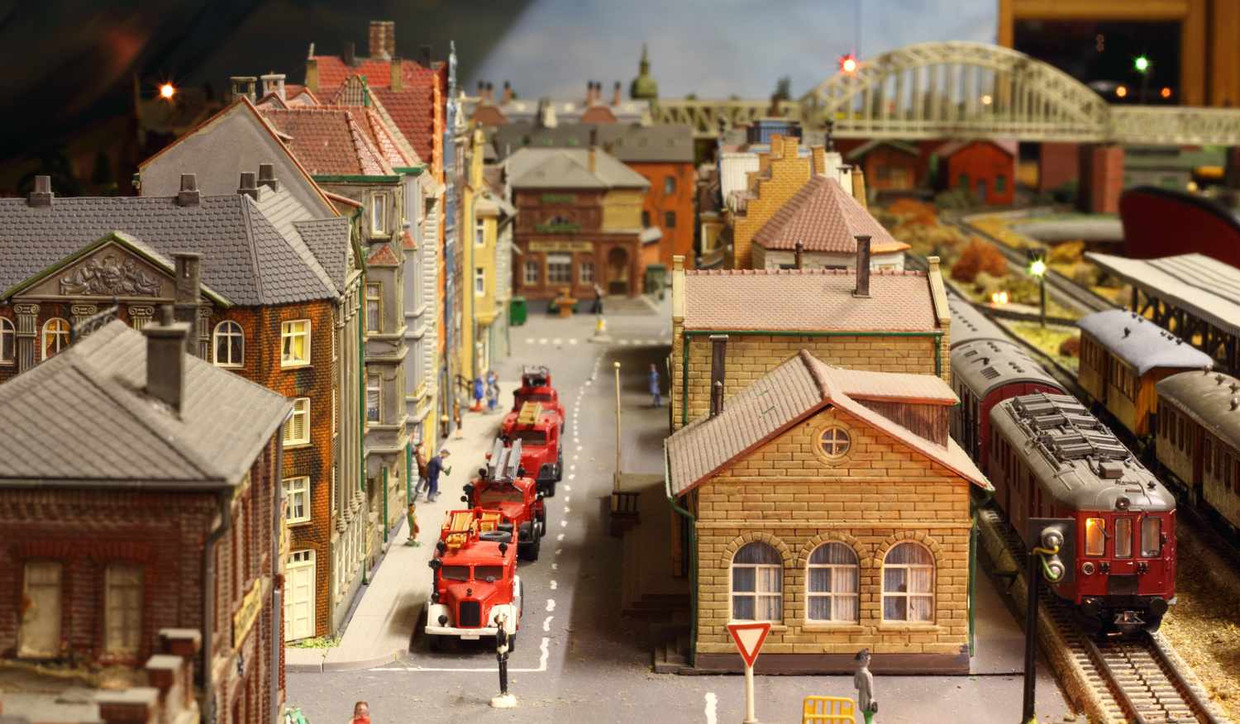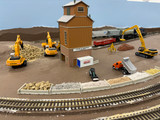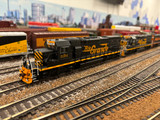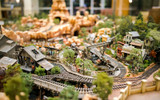1.1 What is DCC and Why Should You Consider Converting?
Digital Command Control (DCC) has revolutionized the world of model railroading. If you're a model railroader, you may have heard about DCC and wondered what it's all about. In this article, we'll introduce you to DCC, explain its advantages over traditional Direct Current (DC) control, and provide you with a fundamental understanding of how DCC works.
What is DCC?
DCC is a method of controlling model trains and their accessories using digital signals sent through the tracks. Unlike traditional DC control, where the voltage on the tracks determines the speed and direction of a locomotive, DCC sends a continuous stream of data to individual trains. Each locomotive and accessory is equipped with a decoder that responds to this data, allowing for precise control over multiple trains on the same track simultaneously.
Why Should You Consider Converting to DCC?
There are several compelling reasons to consider converting your model railroad layout from DC to DCC:
1. Enhanced Realism:
DCC allows for more realistic train operations. You can control the speed, direction, and even the sound and lighting effects of each locomotive independently. This level of control brings your layout to life, making it more immersive and enjoyable.
2. Simplified Wiring:
DC control systems require complex wiring to isolate different sections of track and control multiple trains. DCC simplifies wiring by allowing you to power the entire layout with a single, constant voltage, eliminating the need for blocks and toggle switches.
3. Multiple Train Operation:
With DCC, you can run multiple trains on the same track without the need for isolated blocks. Each locomotive responds to its unique digital address, ensuring that you have complete control over each train's movement.
4. Functionality and Automation:
DCC decoders can control various functions beyond speed and direction, such as lights, smoke generators, and even couplers. This enables you to automate various aspects of your layout, enhancing the overall experience.
5. Expansion and Upgrades:
DCC systems are highly expandable. You can start with a basic setup and gradually add more locomotives and accessories as your budget and layout evolve. This scalability makes DCC a long-term investment.
1.2 Advantages of DCC Over DC for Model Railroads
When comparing DCC to the traditional DC control system for model railroads, it becomes clear that DCC offers several distinct advantages that enhance the hobby in numerous ways. Here are some of the key benefits of choosing DCC:
Precision Control:
DCC allows for precise control of locomotives, enabling you to set speed and direction independently for each train. This level of control enhances the realism and operational experience of your layout.
Realistic Sound and Lighting:
Many DCC-equipped locomotives come with built-in sound and lighting effects. This adds another layer of realism to your layout, as you can replicate the distinct sounds of different locomotives and control various lighting features.
Simultaneous Operation:
DCC enables you to run multiple trains on the same track simultaneously. Each locomotive has its own unique digital address, ensuring that you have complete control over individual trains without interference.
Simplified Wiring:
With DCC, you only need to provide a constant voltage to the track, simplifying the wiring compared to DC systems, which require intricate block wiring.
Functionality Expansion:
DCC decoders can control various functions beyond speed and direction, such as smoke generators, couplers, and more. This versatility allows you to customize and automate your layout to a greater extent.
Easy Upgrades:
DCC systems are scalable, making it easy to expand and upgrade your model railroad over time. You can start with a basic setup and gradually add more locomotives and accessories as your skills and budget allow.
In the next section, we will delve deeper into how DCC works, providing a fundamental understanding of the technology behind this innovative control system.
1.3 Understanding the Basics: Digital Command Control Explained
To fully appreciate the advantages of DCC, it's essential to understand how this technology works. In this section, we'll break down the basics of Digital Command Control, explaining the key components and processes involved in operating model trains with DCC.
Central Command Station:
At the heart of a DCC system is the Central Command Station. This unit generates digital control signals that are sent through the tracks to communicate with locomotive decoders. The Central Command Station also typically includes a throttle control, allowing you to adjust the speed and direction of your trains.
Locomotive Decoders:
Every locomotive on your layout that you want to control with DCC needs a decoder. These small electronic devices are installed inside the locomotive, and they receive and interpret the digital signals sent by the Central Command Station. Decoders control various functions, such as motor speed, direction, lights, and sound effects.
Digital Addresses:
Each locomotive decoder is assigned a unique digital address, typically ranging from 1 to 127. When you want to control a specific locomotive, you select its address on the throttle control, and the Central Command Station sends commands to that locomotive's decoder.
Track Bus:
The track bus is the wiring system that carries both power and digital signals to the tracks. Unlike DC systems, which require complex block wiring to isolate sections of track, DCC uses a single continuous voltage on the tracks. Digital signals ride on top of this voltage, allowing precise control of multiple locomotives on the same track.
Function Outputs:
In addition to controlling speed and direction, decoders often have function outputs that can control auxiliary features, such as headlights, horn sounds, bell sounds, and even smoke generators. These outputs can be programmed to activate in response to specific commands or events on your layout.
Now that you have a basic understanding of how DCC works, you're ready to explore the world of DCC further and discover the many possibilities it offers for enhancing your model railroad layout. In the upcoming articles in this series, we'll delve into more advanced DCC topics, including decoder programming, accessory control, and layout automation.
Midwest Model Railroad has multiple DCC Books available to help you through the transition to DCC.
Photo Credit: The Spruce / Ryan C Kunkle
Recent Posts
-
All Aboard the Wisdom Express: Life Lessons from Model Railroading
Embarking on the journey of model railroading opens the door to a world where imagination meets prec
-
Capturing History in Miniature: The Art of Prototype Modeling in the Model Railroad World
Prototype modeling in the model railroad world involves creating miniature replicas of real-life tra
-
Unveiling the Imaginative World of Fictional Railroads: Where Creativity Meets the Rails
Model railroading has long been a hobby rooted in historical accuracy and meticulous attention to de




